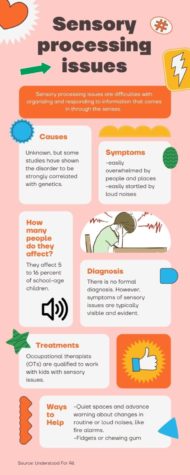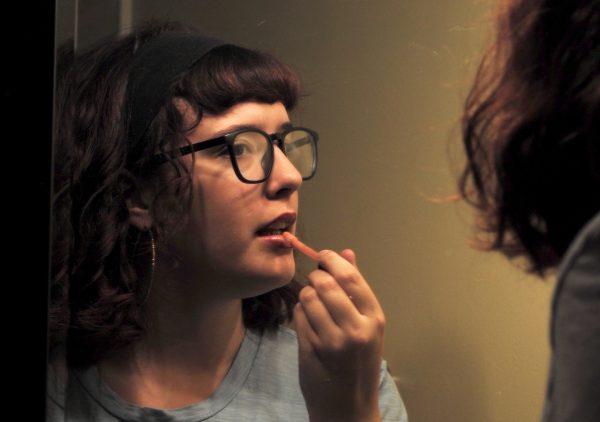A quiet place
For students who want to avoid the pep rally, the cafeteria offers refuge.
photo by Janell Lim
Junior Nina Honda does her precalculus homework in the cafeteria during the pep rally. According to Honda, she decided not to go to another pep rally after her last one was stressful and overwhelming.
Shouts. Screams. Cheers. Students packed into the bleachers, cheerleaders twirling, jumping, the band blaring out with trumpets and saxophones. The scene is familiar to many students— the bright lights and colors of a pep rally.
Meanwhile, in the cafeteria, junior Jane Doe* looks over her precalculus homework, sitting quietly by her friend, junior Nina Honda. Around her, 30 other kids sit in silence, listening to music, doing homework, or simply talking with friends. The air is silent, calm and tranquil, a stark contrast to the loud scene across campus.
These students, who choose not to go to pep rallies, each have their respective reasons, though many attributed their absence to the sheer noise factor of the rally.
“Just how big it is, how loud it is. All the energy doesn’t bode well with me. It’s too much,” Doe said.
The problem is worsened by Doe’s sensory processing issues, which means she is easily overwhelmed by loud noises often found at pep rallies.
“It’s a break. Instead of being overstimulated in a very big space with a lot of people, it’s something that just gives me time to breathe in between a theater class and a math class, where I struggle a lot,” she said.
Other students avoid pep rallies because of the weather and a lack of interest in the focus on sports. For junior Kylie Sheplan, celebrating a football team with a record of 6-4 in the Florida heat is less than ideal.
“It’s outside and it’s Florida, which is way too hot. I don’t really see a need to celebrate [the football team] when we should be celebrating, like, the bowling team who always wins,” Sheplan said.
According to principal Robert Frasca, the reason the school celebrates the football team is because it has the largest number of students involved.
“Friday nights, it’s a football game. That’s really a big school event. Those are your biggest school events. As far as attendance it’s up because you have so many different students involved in so many ways,” he said.
According to Frasca, the option to opt out of pep rallies has always been available to students, though it was more pronounced this year.
“This year in particular we made sure to have an option because there were extra elements added in. One, a bigger crowd. Some students may not have felt comfortable being in a bigger crowd and two, being outside, where it’s hot in the sun,” Frasca said.
However, according to Doe, she was not informed of this option during her freshman year.
“I asked multiple teachers my freshman year if I was able to stay behind,” Doe said. “I was told I had to go, so I did. But if I was told by a teacher that I didn’t have to go, my freshman year might have been a little bit different.”
Students who decide not to go to pep rallies should inform the teacher of the class they are currently in, and go down to the cafeteria.
Although these students choose not to go to pep rallies, some still see its benefits, despite choosing not to participate.
“I see [pep rallies] as positive. I think they can be good for the school spirit and overall student morale. I just prefer not to go,” Honda said.
When asked how they would change the pep rally if given the chance, Sheplan said she would move the pep rally indoors and celebrate a team other than the football team. Doe said she would prefer spacing the students out, especially with COVID as a concern.
“If there was a quieter option, or a less crowded option for boosting school morale, I would 100% do it,” she said.
*names changed for privacy

Your donation will support the student journalists of Hagerty High School. We are an ad-free publication, and your contribution helps us publish six issues of the BluePrint and cover our annual website hosting costs. Thank you so much!







